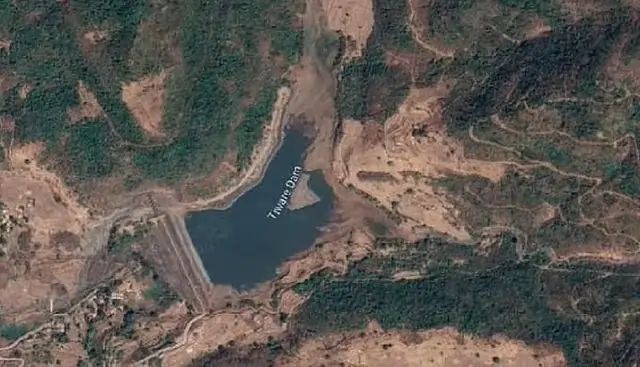New Delhi: In a move poised to reshape India’s resource extraction landscape, the Ministry of Environment, Forest and Climate Change (MoEFCC) has issued a contentious directive exempting mining projects for atomic and critical minerals from mandatory public consultations under the Environmental Impact Assessment (EIA) Notification, 2006. Driven by urgent appeals from the Ministry of Defence (MoD) and the Department of Atomic Energy (DAE), the decision aims to fortify national security and reduce reliance on foreign mineral supplies. However, it has sparked fierce opposition, led by Tamil Nadu Chief Minister M.K. Stalin, who warns of ecological devastation and a betrayal of democratic principles.
This policy shift, detailed in a September 8, 2025, office memorandum (OM) from the MoEFCC’s Impact Assessment Division, targets minerals deemed vital for India’s defense, nuclear energy, and high-tech sectors. The exempted projects include atomic minerals like uranium, thorium, monazite, and zircon, listed under Part B of the First Schedule of the Mines and Minerals (Development and Regulation) Act (MMDR), as amended in 2023, and critical and strategic minerals such as lithium, cobalt, beryllium, cadmium, gallium, indium, rhenium, selenium, tantalum, tellurium, titanium, tungsten, vanadium, graphite, and potash, listed under Part D. The move, framed as a response to “national defence and security requirements and strategic considerations,” has ignited a firestorm over its implications for environmental governance and cooperative federalism.

Why the Exemption? Security and Self-Reliance at the Core
The MoEFCC’s decision stems from letters dated August 4 and August 29, 2025, from the MoD and DAE, respectively, urging swift action to secure domestic mineral supplies. The MoD emphasized the critical role of rare earth elements (REEs) in defense technologies, including radar and sonar systems, laser-based communication devices, avionics, mounting systems for armored vehicles, and precision-guided munitions. These rely heavily on permanent magnets, where REEs are indispensable. With global supplies concentrated in a few countries—primarily China, which imposed export curbs from April to July 2025, disrupting India’s electronics, automotive, and clean energy sectors—the MoD flagged a “huge supply risk.” Domestic mining, they argued, is essential to ensure a steady flow of these materials, justifying their classification as projects of “national defence and security” exempt from public hearings under sub-clause (f) of clause 7(III)(i) of the EIA Notification, 2006.
The DAE echoed this urgency, spotlighting thorium’s role as a fuel for India’s third-stage nuclear energy program, extracted from monazite in beach sands, and uranium’s necessity for current nuclear ambitions. To meet rising energy and research demands, the DAE called for “enhancement of production” through new deposits, necessitating streamlined clearances. The MoEFCC’s OM ensures these projects undergo “comprehensive appraisal” by central-level expert committees, regardless of lease size, but bypasses local consultations to expedite approvals.
This exemption aligns with broader efforts to bolster India’s mineral self-sufficiency. The MMDR Amendment Act, 2023, prioritized these minerals, reserving atomic ones for government control while opening critical and strategic ones to private investment to scale production. The National Critical Minerals Mission, launched in January 2025, further underscores this push, encouraging local sourcing. Union Commerce and Industry Minister Piyush Goyal, speaking on September 9, 2025, warned steel industries of potential shortages akin to the REE crisis, urging reliance on domestic suppliers. The MoEFCC has also streamlined forest clearances, amending the Van (Sanrakshan Evam Samvardhan) Rules, 2023, on August 31, 2025, to create a dedicated category for critical minerals and allowing offline applications for “strategic” and “national importance” projects. The Parivesh portal now features a specialized track for these approvals, as noted in Parliament’s monsoon session.
Proponents argue this will slash project timelines by months or years, as public hearings—designed to address community concerns over pollution, displacement, or ecological harm—often face delays from local objections. By streamlining clearances, the government aims to attract investment, reduce import dependence (especially on China, which dominates over 80% of global REE processing), and fuel India’s green and high-tech sectors, from electric vehicle batteries to renewable energy systems.
Tamil Nadu’s Outcry: Ecological and Democratic Stakes
Tamil Nadu, home to REE-rich beach sands along its ecologically fragile coasts, has emerged as the epicenter of resistance. On September 12, 2025, Chief Minister M.K. Stalin penned a scathing letter to Prime Minister Narendra Modi, demanding the OM’s withdrawal. “Policy changes of such significance must be deliberated transparently in Parliament and State Legislatures, with due consultation of the States and members of the public,” he wrote, slamming the move as a violation of “cooperative federalism and the democratic ethos of our country.”
Stalin highlighted the vulnerability of Tamil Nadu’s coastal districts, particularly along the Gulf of Mannar and Palk Bay, where monazite deposits coexist with critical ecosystems. These include nesting grounds for endangered sea turtles, coral reefs, mangroves, and sand dunes that shield against erosion and cyclones. “These ecosystems sustain biodiversity, stabilise shorelines, sequester carbon, and safeguard coastal communities,” he stressed, arguing that mining in such areas is “inherently eco-sensitive” and demands rigorous scrutiny with full community involvement.
The EIA Notification, rooted in the Environment (Protection) Act, 1986, mandates a multi-step process—screening, scoping, public consultation, and appraisal—to predict and mitigate project impacts. Public hearings, formalized in 1994 and strengthened in 1997 and 2006, are a statutory cornerstone, ensuring affected communities can voice concerns over livelihood losses, displacement, or environmental degradation. Stalin warned that bypassing them “deprives local communities of their right to raise legitimate concerns,” weakening participatory democracy.
He also raised legal red flags, citing the National Green Tribunal’s history of striking down OMs that dilute statutory safeguards and the Supreme Court’s 2020 ruling in Alembic Pharmaceuticals Ltd. v. Rohit Prajapati & Ors., which held that executive instructions cannot override statutory notifications. The September 8 OM, he argued, is an “impermissible executive amendment” vulnerable to judicial challenge. Yet, Stalin reaffirmed Tamil Nadu’s commitment to national defense and strategic goals, noting its historical contributions.
Broader Implications: Balancing Growth and Governance
The exemption’s stakes are monumental. Atomic minerals like uranium and thorium fuel nuclear power plants, advancing energy security and research. Strategic minerals—iron ore, chromite, copper—are vital for defense equipment, aerospace, and steel. Critical minerals like lithium, cobalt, and REEs drive electric vehicles, renewables, and electronics, positioning India for a sustainable, tech-driven economy. The private sector’s role in critical mineral mining, enabled by the MMDR Act, promises economic boosts, but the lack of public input risks unrest, litigation, and eroded trust.
Critics see a dangerous precedent: Frequent EIA exemptions could hollow out environmental governance, especially as climate crises demand robust protections. Communities, often the first to face pollution or displacement, may be sidelined, fueling protests. Tamil Nadu’s ecologically sensitive coasts, already a hotspot for industrial disputes, could become flashpoints. The central override also strains federal relations, with states like Tamil Nadu demanding a voice in decisions impacting their lands and people.
As India chases mineral self-reliance, the exemption underscores a deeper tension: security imperatives versus democratic accountability. Stakeholders urge a balanced approach—perhaps blending swift central appraisals with localized advisory forums. For now, the OM holds firm, but its fallout will play out in courtrooms, state assemblies, and the fragile sands of India’s coasts, where nature and necessity collide.
FAQs
1. What is India’s new mining exemption, and why was it introduced?
On September 8, 2025, the Ministry of Environment, Forest and Climate Change (MoEFCC) exempted mining of atomic minerals (e.g., uranium, thorium) and critical/strategic minerals (e.g., lithium, cobalt, rare earths) from public consultations under the EIA Notification, 2006. Driven by requests from the Ministry of Defence and Department of Atomic Energy, the move aims to bolster national security, reduce import reliance (especially on China), and speed up clearances to attract investment for defense and nuclear energy needs.
2. Why is Tamil Nadu opposing this exemption?
Tamil Nadu CM M.K. Stalin, in a September 12, 2025, letter to PM Modi, demanded the exemption’s withdrawal, arguing it violates cooperative federalism by bypassing Parliament and state consultations. He highlighted risks to Tamil Nadu’s ecologically sensitive coasts, home to turtle nesting grounds, coral reefs, and mangroves, warning that mining without community input could harm biodiversity and livelihoods, sparking protests.
3. What are the risks of skipping public consultations?
The exemption may hasten project approvals but risks:
Governance Erosion: Sets a precedent for weakening environmental safeguards.
Legal Challenges: It could violate EIA, 2006, and face judicial review, as seen in past rulings.
Transparency Loss: Excluding communities erodes trust and accountability.
Conflicts: Lack of local input may trigger protests or litigation.
4. How does this fit into India’s mineral policy?
The exemption aligns with the MMDR Amendment Act, 2023, and the National Critical Minerals Mission (January 2025) to boost domestic production. Amendments to forest rules and a dedicated Parivesh portal category fast-track approvals. This counters global supply risks, like China’s 2025 rare earth export curbs, to support defense, nuclear, and green tech sectors.
5. Why are these minerals critical for India?
Atomic minerals (uranium, thorium) fuel nuclear energy, while critical minerals (lithium, cobalt, rare earths) power defense technologies (radar, munitions) and green industries (EV batteries, renewables). Domestic mining reduces import dependence, strengthens security, and drives economic and sustainable growth.

